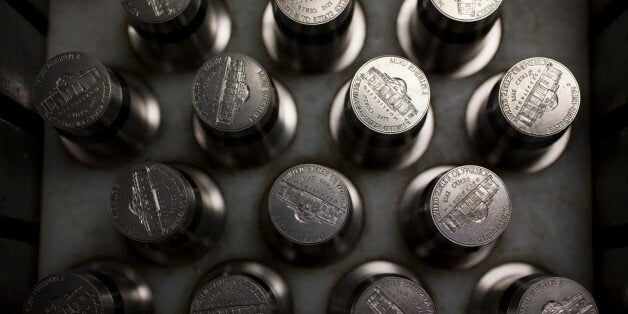
In the land of the blind, as the saying goes, a one-eyed man is king. Similarly, in the land of the crazy, even someone a little off-center could be considered sane. With the budget battle going on in Washington right now, it would not be a stretch to say that we have veered very far into the land of the crazy, suspended somewhere between the absurd and the dangerous, and so even bizarre solutions might actually make some sense.
The real threat to our economy, of course, is not the government shutdown but the upcoming debate (if you can call it that) over the federal debt ceiling. I have heard diverse views on the subject, including how our exports would benefit from a cheaper dollar stemming from a government default, how our manufacturing sector would get a shot of adrenaline from imports becoming more expensive, and how a clampdown on borrowing might be the only way for us to learn fiscal discipline.
But while these views may have some merit, not raising the debt ceiling is really out of the question. Whatever benefits might accrue from taking such a step will be more than obliterated by the economic chaos that will follow the effective bankruptcy of the U.S. government, the collapse of our capital markets because of extreme uncertainty, shutting off of credit by lenders, disruption in Social Security, Medicare and other essential benefits for citizens who depend on them, possible default on government bonds, a spike in unemployment, and severe damage to our global credibility as a financial power.
In light of that, and in light of the fact that our political leaders seem completely incapable of resolving their differences in this case, it may not be a bad idea to consider a left field solution like a trillion-dollar coin to backstop government spending. The idea has been floating around for a while and was rejected by President Obama in 2011 during a similar crisis, but the situation today is more dire.
The legality of a trillion-dollar coin is strange but valid. Basically, the U.S. government is not allowed to issue unlimited amounts of paper currency but can do so for platinum coins. What that means is that theoretically the Treasury could mint a single trillion-dollar coin and hand it to the Federal Reserve (instead of the customary Treasury securities), which would then give the government the cash it needs to pay its bills. However, the only money that would actually enter the system would be the money that is spent by the government and not new money (printed money) that most people associate with this idea. Yes, the coin is also technically printed but it doesn't go into circulation.
This distinction is important because it means that the only real impact of a trillion-dollar coin would be to nullify a trillion dollars worth of additional debt that the government would otherwise have to take on through the issuance of new Treasury securities; and therefore it is not an inflationary factor -- at least not in the traditional sense. Also, as a one-time solution, it is really not much worse than deficit spending -- which is how we got here in the first place.
Naturally, the Constitutionality of such an action would be hotly contested in court for years to come and a trillion-dollar coin is really more an accounting gimmick to sidestep the debt ceiling and not a proper solution to the problem, but it would solve the immediate crisis, and that is worth something.
If we are lucky, the trillion-dollar coin will never have to be minted, but President Obama should consider it seriously anyway, if for no other reason than to force an end to the present gridlock. Let's not forget that even if the debt ceiling debate does eventually end positively, the 2011 fiasco resulted in a downgrade of the U.S. credit rating, and given how crazy Washington is right now we may be better off protecting our present than betting on our future.
SANJAY SANGHOEE is a political and business commentator. He has worked at leading investment banks Lazard Freres and Dresdner, as well as at multi-billion dollar hedge fund Ramius. His opinion pieces have appeared in FORTUNE, Bloomberg Businessweek, Christian Science Monitor, and Huffington Post, and he has appeared on CNBC's 'Closing Bell', TheStreet.com, and HuffPost Live on business topics. He is also the author of two thriller novels.
For more information, please visit www.sanghoee.com